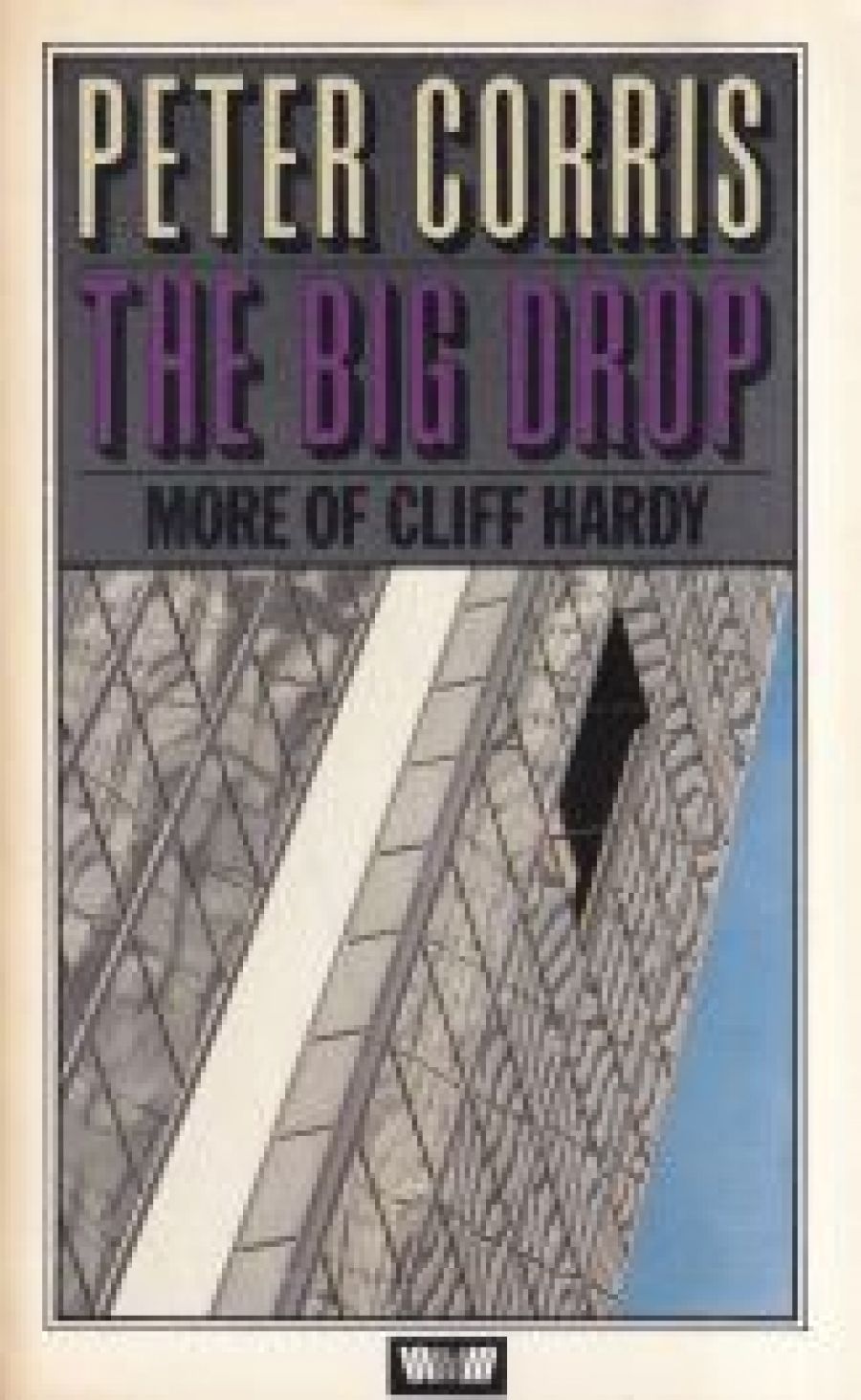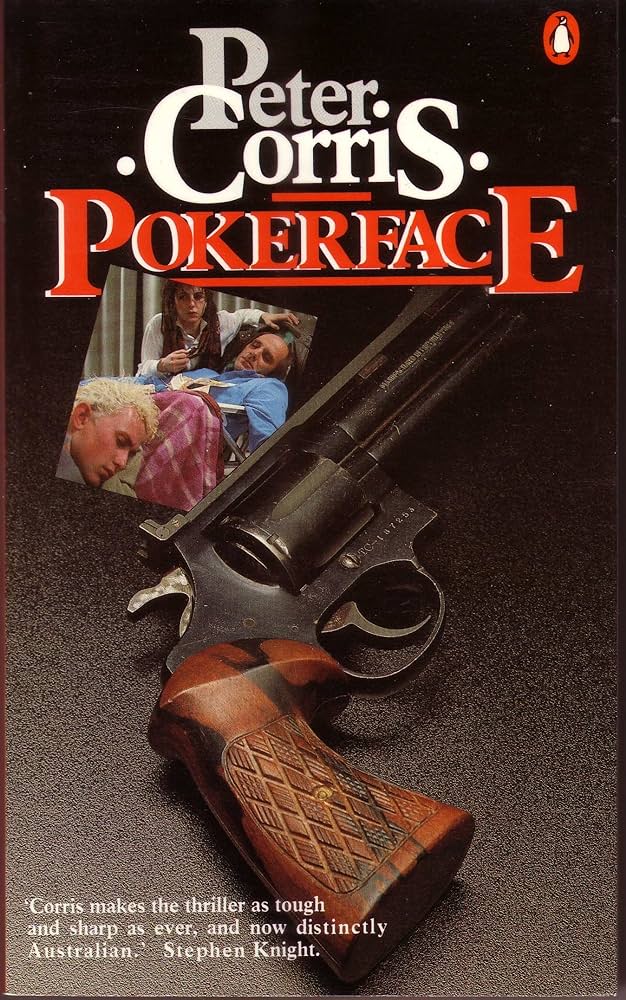
- Free Article: No
- Contents Category: Australian Fiction
- Review Article: Yes
- Article Title: Mapping the Cities
- Article Subtitle: Corris, not travelling well
- Online Only: No
- Custom Highlight Text:
Place has always been an intrinsic element in the detective story from the Paris of Poe’s Murders in the Rue Morgue (despite the fact that his knowledge of the city came from an exhibition and not reality) to the London of Holmes to the village of Miss Marple to San Francisco of Hammett. In many cases it is as important a component as the detective character itself, or at least the detective is so entwined in his or her geography as to be impossible to conceive without it. This aspect of the detective novel probably reached if not its penultimate then its most obvious demonstration in Raymond Chandler’s Philip Marlowe and has continued through the LA detective tradition that Chandler founded (with considerable outside help from Hammett). The liveliness of that tradition together with the fact that Los Angeles is home to Hollywood have made it the most mapped city in public consciousness.
- Book 1 Title: The Big Drop
- Book 1 Subtitle: More of Cliff Hardy
- Book 1 Biblio: Unwin Paperbacks, $5.95 pb, 213 pp
- Book 1 Cover Small (400 x 600):

- Book 1 Cover (800 x 1200):

- Book 2 Title: Pokerface
- Book 2 Biblio: Penguin, $5.95 pb, 191 pp
- Book 2 Cover Small (400 x 600):

- Book 2 Cover (800 x 1200):

This is interesting to keep in mind when looking at these two volumes by Peter Corris: first because Corris with Cliff Hardy has established a character entwined with the city of Sydney, secondly because Corris can be seen to be firmly within the LA tradition (like most of the credible contemporaries in this tradition, Corris has produced an interesting twist to the formula – Joseph Hanson might have a gay detective but Corris’s LA has harbour views) and thirdly because the collection of Sydney based Hardy stories contrasts interestingly if not tellingly with the Melbourne based thriller of Pokerface.
The Big Drop collects together ten Cliff Hardy short stories most of which have appeared previously in magazines, sometimes under different titles. Apart from Conan Doyle and some of his contemporaries, and Chesterton’s Father Brown stories, the short story has never seemed to me to be an adequate vehicle for the detective: by the time the situations have been set, the characters and mysteries introduced, they end – just as you are settling in for the game of cat and mouse there is suddenly nothing left but a tuft of grey fur about the whiskers. These stories are no exception and many of them read like beginnings of novels cut short; in places one gets the feeling that Corris is trying too hard with Hardy’s wisecracks, as if the restricted space demanded a heavy hand.
But the stories are still solid enough with those qualities expected after the Cliff Hardy novels to be enjoyable if light reading: competent, confident and contemporary prose moves Hardy through the Sydney landscape and its variety of place and person. As in the novels, some of the situations and plot devices are familiar but then Corris is using a set pattern already well worked and it is the fine detail within the pattern that matters. Corris’s individuality is in his creation of Hardy and Hardy’s Sydney, for the character is indistinguishable from the geography and the geography is conveyed with marvellous credibility (even if some facts are a little askew). As in the best of the LA tradition there is a lot of driving about and descriptive contrasting of one area with another. The city is tough and so is Hardy, even if at times the violence is a bit gratuitous and comes more from Corris’s obvious enjoyment of describing the mechanics of fighting than plot necessity (surely males, even detectives, don’t introduce themselves with fists to every fourth other male they meet!). The city is painted by broad sweeps counterpoised with detailed particulars, interwoven with Hardy’s (and Corris’s no doubt) own enjoyment of the place:
As always when I drive around Sydney, I left the water with some reluctance. There’s nothing much to be said for driving into Darlinghurst on a Thursday afternoon, especially since they’ve blocked off all the streets so you can’t park within three blocks of where you want to go. I parked near one of the barriers and walked through a set of narrow lanes to Royal Street. Number 48 was in the middle of a narrow terrace presenting a flat, blank face to the street. It had the standard bars on the windows and the standard bluestone front step worn concave by more than a hundred years of feet.
The Big Drop is for those who just want a taste of Hardy or have read all the novels so far and are impatient for more.
Pokerface is a completely different story, or almost. Corris is in literary territory closer to Carre than Chandler and the story is set in his hometown rather than his chosen one. The intrigue revolves around an ASIO-inspired organisation called the Federal Security Agency where we find Crawley and Huck, two relatively war weary agents, not getting on too well with the all-too-neat and relatively newly appointed head Campion. The organisation has problems and Crawley suspects there is a plant within it, but Campion is being pressured from Canberra and decides things need to be seen to be done and heads must roll. So he rolls Crawley’s, and Crawley goes off justifiably upset. Crawley’s wife then leaves him and he becomes involved with a group of ‘punks’ who dream of being a Red Army Faction for billboard graffiti.
Crawley decides to use the gang in intrigues aimed at the FSA and in particular Campion. Unfortunately, the intrigues never get above confusion and, unless I read it uncarefully, we never hear any more about Crawley’s suspicions of a plant. In fact, the book never really rises above a very run-of-the-mill thriller and sometimes doesn’t even rise that high. While the characters from the FSA are believable enough and the opening situation likewise, the rest is unconvincing. The political rhetoric of the supposedly eighties punk gang is far too reminiscent of the rhetoric of the late sixties and early seventies – one can hardly imagine that a group coming out of the anarchist-to-nihilist subculture of punk would consider Cuba an ideological homeland. The plot becomes a shambles of a labyrinth rather than an engaging one: Crawley simply gets away with too many things: he gets guns and explosives from those who just fired him and while they ostensibly distrust him, they also seem to believe every word he says. We know Crawley is going to win from the beginning but we never really find out how – and, most importantly, what – he has in fact won.
But it is the city which doesn’t exist at all despite a labouring over the names of streets and suburbs. We are told again and again that we are in Melbourne but there is no attempt to paint it. Corris has either forgotten most of what makes Melbourne or, more likely, never knew it. Or perhaps it is more telling – If most of the sources and influences for his writing are Californian – then the somewhat unique ambience of Melbourne may prove too much for his style. No doubt the story is set in Melbourne because Melbourne is (or at least has been) the real centre for political intrigues but none of that sense comes across in the anonymous city presented. It is not imperative upon Corris to paint Melbourne, of course, but when we get to a sentence like ‘Miles looked out at the Melbourne streets as Campion sketched a plan’, we are faced with an impotence of creative description: since we’ve been in Melbourne all the time, what other streets can Miles be looking at? This is probably the worst instance in the book but it is symptomatic of its faults, not just in describing place (though that is the most irksome), but in plot and character as well – beneath the well-made texture of the prose (slower in pace than in the Hardy stories), all we are given is gestures. I cannot resist pointing out that while a pokerface may be the product of inscrutability it can also be the product of plain non-understanding.
Corris, with his Hardy novels, is one of the better exponents of the contemporary follow-on of the LA tradition, hopefully Pokerface is not a departure from the Hardy books, just a wrong tum along the way. For those who have not yet made acquaintance with his work, I would recommend they start with those novels before either of these books.


Comments powered by CComment